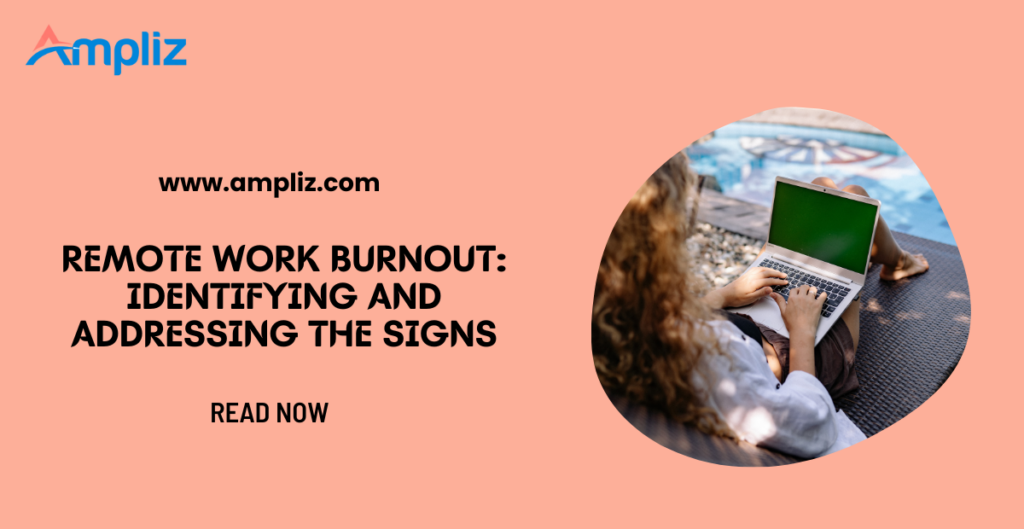The global pandemic has expedited the shift to remote work, which has fundamentally altered the way we operate. While working remotely might be convenient and flexible, there are drawbacks as well, with burnout being one of the most common. Burnout is a condition of extreme physical, mental, and emotional tiredness brought on by extended periods of high stress. Burnout can seem differently and may not always be obvious in a remote work environment. Maintaining employee wellbeing and productivity requires being aware of the warning signs of burnout and acting quickly to alleviate them. In this article, we will explore the signs of remote work burnout and strategies to mitigate its impact.
The Rise of Remote Work
The digital age has facilitated a shift towards remote work, allowing employees to work from anywhere, be it their homes, cafes, or co-working spaces. This flexibility has been celebrated for its ability to improve work-life balance, reduce commute times, and increase productivity.
The Dark Side of Remote Work
However, this newfound freedom has a dark side. Without the boundaries of a traditional office setting, many employees find it challenging to switch off from work, leading to longer working hours and increased stress levels.
Understanding Remote Work Burnout
Burnout is a condition of extreme physical, mental, and emotional tiredness caused by constant, high levels of stress. Due to the blurred boundaries between work and home life, the absence of in-person interaction, and the increased feelings of isolation, burnout can present itself differently in a remote work situation than it would in a regular office setting.
Burnout from remote work can result in lower output, worse job satisfaction, higher absenteeism, and even higher employee turnover. Early detection of the symptoms can assist employers in taking prompt action to stop the situation from getting worse.
Signs of Remote Work Burnout
Recognizing the early signs of burnout is essential for employers to intervene timely and prevent further deterioration of employee well-being. Some common signs of remote work burnout include:
1. Increased Irritability and Frustration
One of the early signs of remote work burnout is heightened irritability and frustration. Employees may find themselves becoming easily agitated by minor issues or snapping at colleagues and loved ones.
2. Fatigue and Exhaustion
Constantly being “plugged in” to work, compounded by the lack of physical separation between the office and home, can lead to chronic fatigue and exhaustion. Even after a full night’s sleep, individuals may wake up feeling drained and unmotivated.
3. Decreased Productivity and Motivation
Burnout often results in decreased productivity and motivation. Tasks that once seemed manageable may now feel overwhelming, leading to procrastination and a sense of inadequacy.
4. Cynicism and Detachment
Employees experiencing burnout may develop a cynical attitude towards their work and colleagues. They may withdraw socially, avoiding team meetings and interactions, further exacerbating feelings of isolation.
5. Physical Symptoms
Burnout can manifest in various physical symptoms such as headaches, muscle tension, and gastrointestinal issues. These symptoms, if left unaddressed, can significantly impact an individual’s overall well-being.
6. Inability to Disconnect
With the boundary between work and personal life blurred in a remote work setup, individuals may find it increasingly challenging to disconnect from work. Practices like understanding tantric breathwork can offer reprieve through mindful breathing techniques that help bring balance and reduce stress levels. Routinely engaging in such practices enables employees struggling with constant connectivity issues to cultivate mindfulness, allowing them to fully relax and rejuvenate. Constantly checking emails and messages, even during off-hours, prevents them from fully relaxing and rejuvenating.
7. Lack of Work-Life Balance
Although it can be flexible, working remotely can make it difficult to distinguish between business and personal life. Without boundaries, people could find themselves working through the night or giving up personal time to complete work-related chores.
Addressing Remote Work Burnout
Recognizing the signs of burnout is only the first step. Employers must take proactive measures to address and mitigate the effects of burnout effectively. Here are some strategies to consider:
1. Encourage Open Communication
Encourage an environment of open communication where employees are able to freely express their worries and ask for assistance. Encourage team conversations, one-on-one meetings, and frequent check-ins to address any problems pertaining to burnout and stress from remote work.
2. Celebrate Milestones and Achievements
Show appreciation for employees’ hard work and dedication through gestures such as a simple thank you note or an appreciation letter, virtual recognition programs, and rewards. Acknowledge their achievements and contributions to boost morale and motivation.
3. Promote Work-Life Balance
Motivate staff members to put self-care first and uphold a positive work-life balance. To refuel and revitalize, promote frequent pauses, physical activity, and leisure pursuits. Offer tools and assistance for reducing stress and enhancing wellbeing.
4. Foster Social Connections
Encourage social ties among distant workers to combat emotions of loneliness and isolation. Promote online forums, coffee talks, and virtual team-building exercises as ways for employees to socialize and engage informally.
5. Provide Training and Resources
Provide resources and training on time management, stress management, and best practices for remote work. Give employees the knowledge and resources they require to function well in a remote workplace and efficiently handle their responsibilities.
6. Set Clear Expectations
Clearly define expectations for availability, work hours, and communication methods. Establish clear boundaries between work and personal life to help employees avoid feeling under constant pressure to be present at all times.
Conclusion
Burnout from remote work is a serious issue that can affect employees’ general job happiness, productivity, and well-being. Through the identification of burnout symptoms and the prompt implementation of remedial actions, remote work environments can be fostered by organizations. To lessen the effects of remote work burnout, it is crucial to promote work-life balance, build social ties, offer tools and training, acknowledge employee efforts, and encourage open communication. Organizations may guarantee that remote work is sustainable and satisfying for their employees by emphasizing employee well-being and adopting proactive measures to minimize burnout.
Frequently Asked Questions (FAQ)
1. How can I differentiate between normal work stress and burnout?
Normal work stress is temporary and typically alleviates with rest or time off. Burnout, on the other hand, is characterized by persistent exhaustion and cynicism towards work, often accompanied by a decline in performance.
2. Can remote work burnout be prevented entirely?
While it may not be entirely preventable, proactive measures such as promoting work-life balance, providing adequate support, and fostering a positive work culture can significantly reduce the risk of remote work burnout.
3. What role do managers play in addressing remote work burnout?
Managers play a crucial role in recognizing the signs of burnout, providing support to employees, and implementing policies that promote well-being and work-life balance.
4. Is remote work burnout only a concern for employees, or does it affect employers as well?
Remote work burnout can have significant implications for both employees and employers, including decreased productivity, increased turnover rates, and negative impacts on organizational culture.
5. How can I express appreciation for my remote team members to combat burnout?
Expressing appreciation through gestures such as personalized thank-you notes, virtual team-building activities, and recognition programs can boost morale and mitigate feelings of burnout among remote team members.




